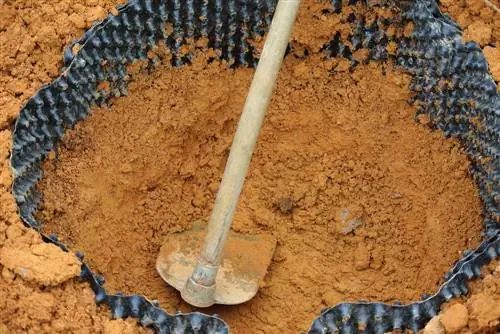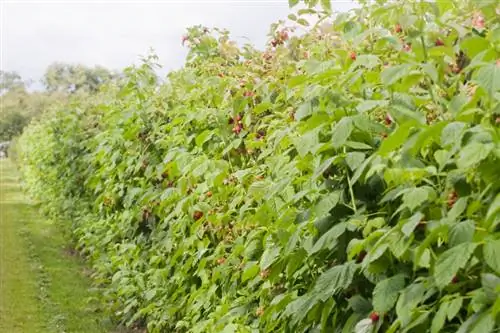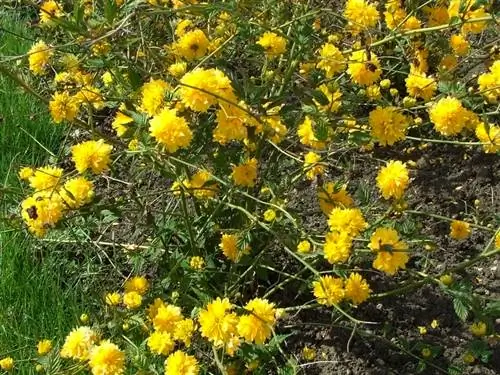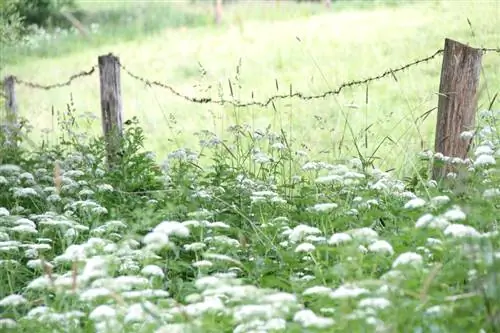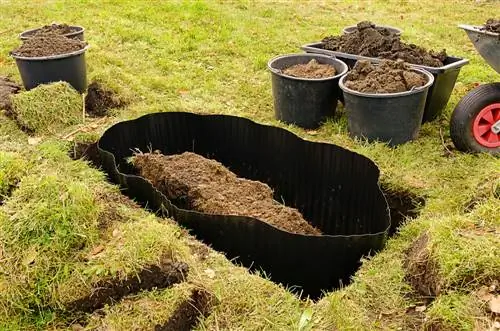- Author admin [email protected].
- Public 2023-12-16 16:46.
- Last modified 2025-01-23 11:22.
Two Aronia species can be found in gardens. The felty one looks very similar to the black chokeberry, but with Aronia melanocarpa the hair disappears after a short time. Both specimens show typical root growth, which requires special measures.

How can you set up a root barrier on Aronia?
To prevent uncontrolled root spread of aronia bushes, we recommend a root barrier made of plastic film that is at least 60 cm deep and connected to metal rails. This means the roots stay in the desired area and do not spread unhindered.
What you need to know about root growth
Chokeberries are shallow-rooted. They develop underground runners that spread into the upper soil layers. Since they sprout at irregular intervals and develop so-called root shoots, they tend to spread uncontrollably. Such shoots are perfect for propagating aronia. If this is not desired, you can prevent the expansion through good preparation.
Stop root spread
So that the roots do not spread uncontrollably underground, a root barrier is recommended. For the chokeberry, this should reach at least 60 centimeters deep into the ground. Plastic films (€79.00 on Amazon) that are connected to metal rails offer the greatest resistance to root pressure. Metals are less suitable as a locking device because most materials corrode into the earth over time.
Dig in root barrier:
- Dig out the planting hole and line the edges completely with material
- make sure that the film is vertical and not tilted
- there should be an overlap of 20 centimeters at the ends
- Insert the plant and fill the hole with excavated soil
Planting
With the right choice of location, you can influence the growth of the aronia in your favor, even if you do without underground root barriers. Shady areas on properties adjacent to forests lead to strong vegetative growth. Since the trees strive for a balance between leaf mass and root ball, their root system also continues to expand.
Soil conditions
A deeply loosened soil encourages the roots at least slightly to penetrate into slightly deeper soil layers. In shallow soils, however, development is slower and delayed. Waterlogging damages the fine roots and causes the shoots to age.
Bare root or potted product?
Aronia bushes are offered either in pots or with loose root balls. Potted plants are usually three to four years old and produce harvests more quickly because the trees bloom from the fourth year onwards. The problem with these plants is the need to loosen up the ball, which is almost impossible for specimens that have been grown in pots for many years. If this step is omitted, the tree will suffer from severe growth retardation.
Bare-rooted shrubs are two to three years old, although older plants grow better and thrive more vigorously. They must be cut before planting. By cutting long roots you encourage new growth. Such specimens are recommended for creating hedges where you need several individuals.
Tip
If the site conditions in your garden are optimal, there will be no obstacles to growth in the way of planting biennial root crops. The goal is for the chokeberry to develop as many ground shoots as possible in its first year.

